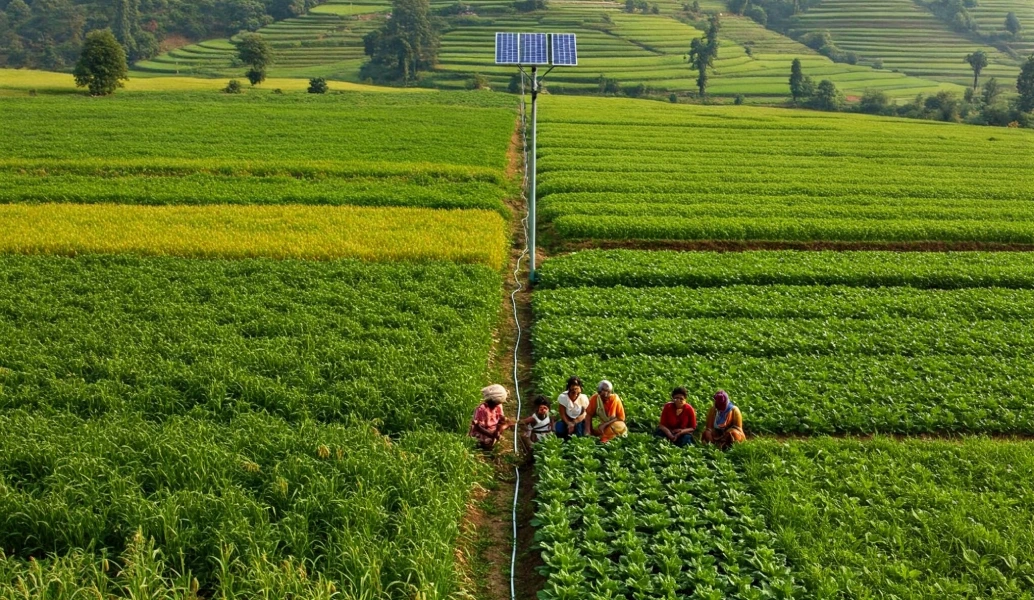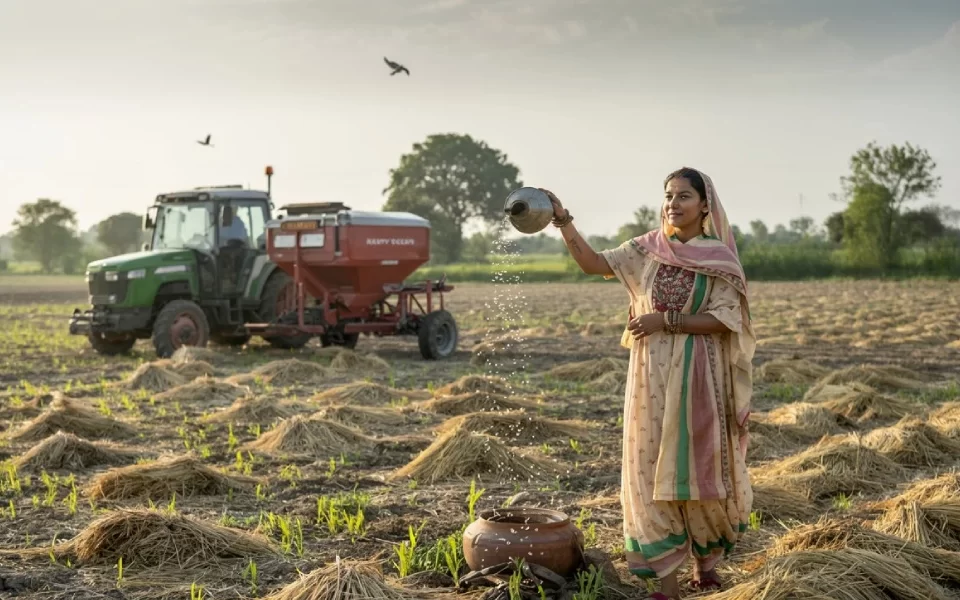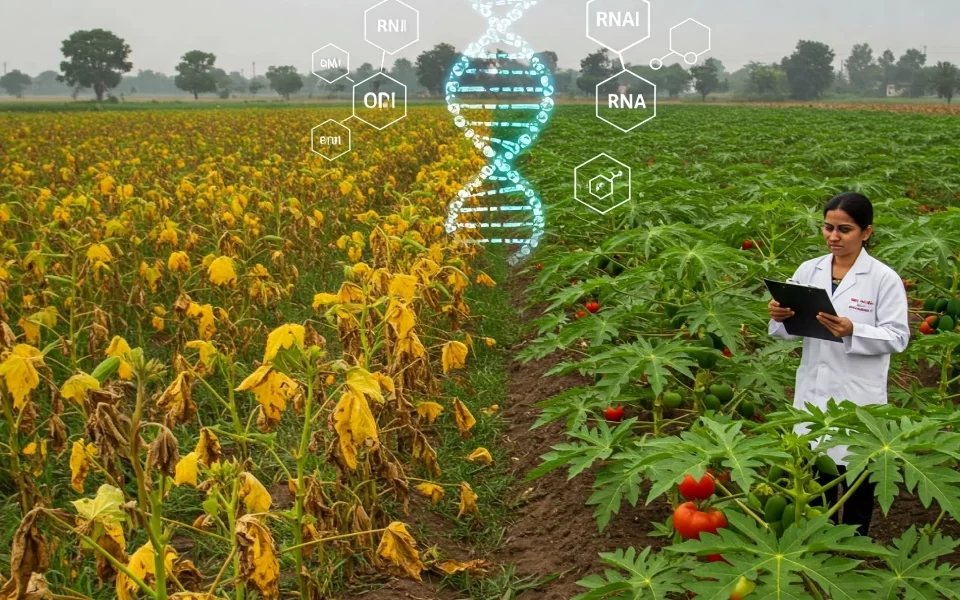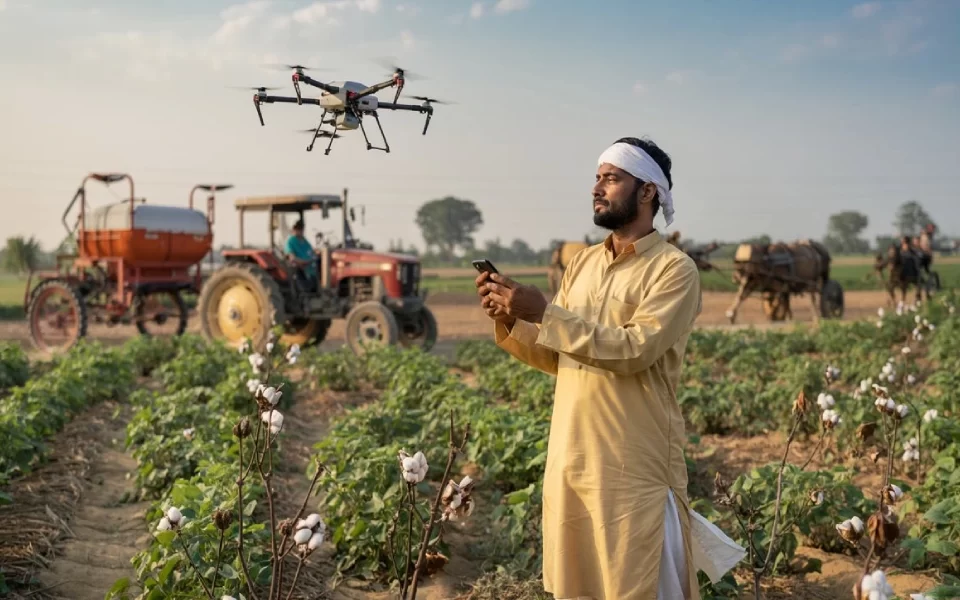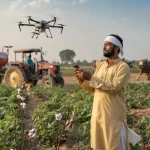
Assessing Agri Drone Viability in India
April 22, 2025Sustainability in Agriculture: Balancing Food Security and Environmental Responsibility
Mansi Popat
Gujarat Technological University
mansipopat1905@gmail.com
Introduction
Agriculture has always been central to human life, but as the population of the world increases and the degradation of the environment intensifies, the demand on food systems is becoming unsustainable. The agriculture industry today is not only expected to feed the world but also to conserve ecosystems, respond to climate change, and promote the rural economy. Agricultural sustainability is about building food systems that are productive, resilient, and environmentally friendly — for today and for generations to come.
The State of Modern Agriculture
Current farming methods are dominated by high-input systems that tend to focus on yield at the expense of long-term ecological integrity. Agriculture consumes 70% of all freshwater globally and is accountable for approximately 30% of global greenhouse gas emissions (FAO, 2020). Agricultural activities in India support almost 43% of the population but only generate 16% of India’s GDP (Census 2021). This economic disparity points to the extent to which farmers are exposed and undervalued in the production chain of food.
Additionally, extensive monoculture, excessive use of chemical fertilizers, and reliance on groundwater have resulted in serious environmental degradation. A third of the soil in the world is moderately to highly degraded through erosion, salinization, acidification, and chemical pollution. These patterns are taking food systems beyond their ecological limits.

Figure 1: Global agriculture greenhouse gas emissions from 2000 to 2017 in billion metric CO₂ equivalents. The stacked bar chart separates emissions from enteric fermentation (dark blue), dominated by methane produced through livestock digestion, and manure management (light blue), showing emissions due to storage and treatment of waste animal material. The statistics reveal a consistent growth in overall emissions over the years, citing the necessity for enhanced livestock production and sustainable waste management practices in agriculture.
(Source: U.S. Environmental Protection Agency (EPA, 2020))
Gaps in Existing Agricultural Practices
In spite of the technological advancements and policy initiatives, there are gaps that hinder agriculture from being fully sustainable:
- Resource Inefficiency: Conventional irrigation practices waste more than 50% of water used in agriculture.
- Climate Vulnerability: The majority of Indian farmers do not have access to climate-smart tools and insurance.
- Market Challenges: Smallholders tend to have limited market access and experience unstable pricing.
- Absence of Training: Most farmers do not know of sustainable practices or lack assistance in adopting them.
These shortfalls not only jeopardize food security but also augment rural poverty and environmental uncertainty.A Path Toward Sustainable Agriculture
Transitioning to sustainability involves embracing farming techniques that balance productivity with conservation. Some proven approaches include:
- Precision Farming: Technology such as GPS-guided machinery, satellite imaging, and soil sensors assist farmers in using water, fertilizers, and pesticides only where and when they are required. This saves costs and the environment.
- Climate-Smart Agriculture: Methods such as zero tillage, drought-tolerant crops, and crop rotation enhance climate shock resilience.
- Organic and Natural Farming: Minimizing the use of synthetic chemicals promotes soil biodiversity and health.
- Integrated Pest Management (IPM): Biological control and crop diversification reduce chemical use while sustaining yield.
- Water Management: Effective measures like drip irrigation, rainwater harvesting, and micro-irrigation considerably minimize water use.
Practice | Conventional Farming | Sustainable Farming |
Fertilizer Use | Synthetic chemicals | Organic/Compost-based |
Water Usage | Flood irrigation | Drip/Micro-irrigation |
Pest Control | Pesticides | Integrated Pest Management (IPM) |
Soil Management | Tillage-based | Zero/minimum tillage |
Crop Diversity | Monoculture | Crop rotation/mixed cropping |
Table 1: This table highlights the key differences between conventional and sustainable farming practices.
Case Study: Sikkim – A Model of Organic Success
Sikkim, a small Himalayan state, proceeded to become India’s first 100% organic state by doing away with chemical inputs and spreading traditional farming practices. Over 75,000 hectares of farm land were shifted to organic, improving biodiversity, water quality, and soil health. The movement also increased tourism and rural economic development.
Sikkim’s achievement proves that farmer participation, political determination, and sustainable agriculture can go hand in hand.
The Role of Technology
As this recent report from Agrivi highlights, digital technologies are changing the way farmers make decisions. Platforms for data analytics support the monitoring of crop health, pest management, and climate risk forecasting. Mobile-based advisory services provide real-time advice to farmers, cutting down uncertainty and making them more profitable and environmentally friendly.
When technology is combined with sustainability, the advantages compound: greater efficiency, lower input costs, and more environmentally sustainable results.
|
2004 | National Horticulture Mission launched |
2010 | Paramparagat Krishi Vikas Yojana (PKVY) started |
2016 | Sikkim declared 100% organic state |
2018 | Zero Budget Natural Farming promoted in Andhra Pradesh |
2022 | India joins FAO’s Global Soil Partnership |
Table 2: The following timeline presents key policy milestones in the path towards organic and sustainable agriculture in India. From national missions for horticulture to state-driven organic revolutions such as in the case of Sikkim, these milestones capture India’s increasing focus on environmentally friendly farming methods.
Personal Perspective
As a student of life sciences, studying sustainability has given me an insight into how food systems and the health of the environment are connected. Sustainable agriculture is not a privilege, but an obligation. If every policymaker, consumer, and student makes tiny steps — such as buying local organic food or raising awareness — we can together make a transition to a better food future.
Conclusion
Agricultural sustainability is not a fad, but a reality. Our world is under pressure and billions rely on farming for food and livelihood; we require farming systems that support people and planet alike. Through investing in policy change, education, and technology, and bridging the gaps that currently exist, we can create a resilient and regenerative food system in the years to come.
Let us sow the seeds of sustainability today, so that generations tomorrow can reap the benefits.
References
- FAO (2020). “The State of Food and Agriculture.” Food and Agriculture Organization. http://www.fao.org
- World Bank (2022). “Water in Agriculture.” https://www.worldbank.org
- Government of Sikkim (2018). “Sikkim Organic Mission.”
- Agrivi (2023). “How Technology Supports Farmers to Protect Profitability.” https://www.agrivi.com/blog/how-technology-supports-farmers-to-protect-their-profitability-and-benefit-the-environment/
- IPCC (2021). “Climate Change and Land Report.”
- Census of India (2021). “Population and Workforce Participation.”


